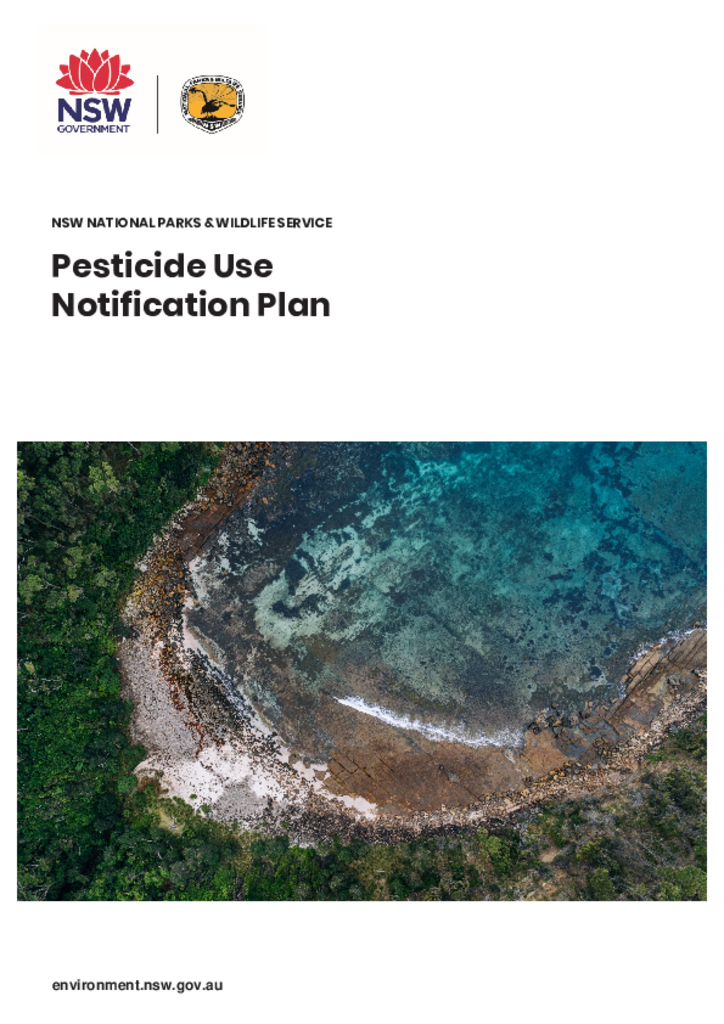Pesticide Use Notification Plan
The Pesticide Use Notification Plan (PUNP) allows members of the community to take action to avoid contact with pesticides, if they wish.
The PUNP sets out how the National Parks and Wildlife Service (NPWS) will notify the community of pesticide applications it makes in public places. The PUNP describes:
- what public places are covered by the PUNP
- who regularly uses these public places and an estimate of the level of use
- how and when NPWS will provide the community with information about its pesticide applications in public places (i.e. what notification arrangements will be used)
- how the community can access this plan and get more information about NPWS’s notification arrangements
- contact details for anyone wanting more information on the PUNP
- special protection measures that will be taken if the pesticide is proposed to be used adjacent to a sensitive place
- the information that will be provided including product name and purpose for which it will be used.
NPWS manages an extensive system of more than 870 conservation areas that protect approximately 7.1 million hectares. Under the National Parks and Wildlife Act 1974, NPWS has a statutory responsibility to manage these areas to conserve nature and places of cultural value. Hence, weed and pest control programs are a management priority for NPWS and pesticides are an essential component of many of these programs.
